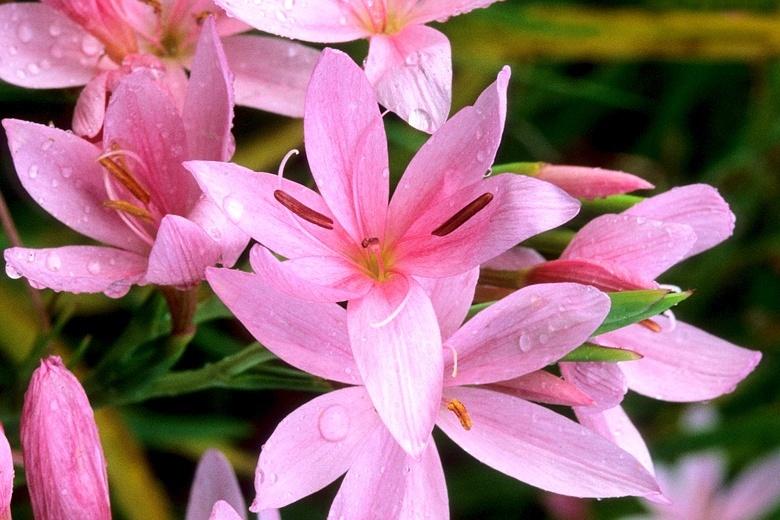Table of Contents
Hesperantha is a dazzling autumn flower plant and originates from the Greek words hesperos and anthos, when blended, means flower.
It stems from Africa and blossoms when the summer ends till the first frost depicting wonderful garden lilies. Also, it is formerly botanically called Schizostylis, or the ‘Crimson Flag’ or ‘kaffir lily uk.’
Where do you see these magnificent garden lilies? On occasion, for decorations, landscape designs, and to adorn gates, walls, hedges, and fences.
What are the benefits of the kaffir lily uk? It benefits the environment by ensuring clean air and preserving soil(less erosion). On top of that, it has medicinal uses for muscle stimulation, pneumonia, uterine stimulation, acute bronchitis, influenza, and fever. It can cure snakebites.
Overview of Kaffir Lily
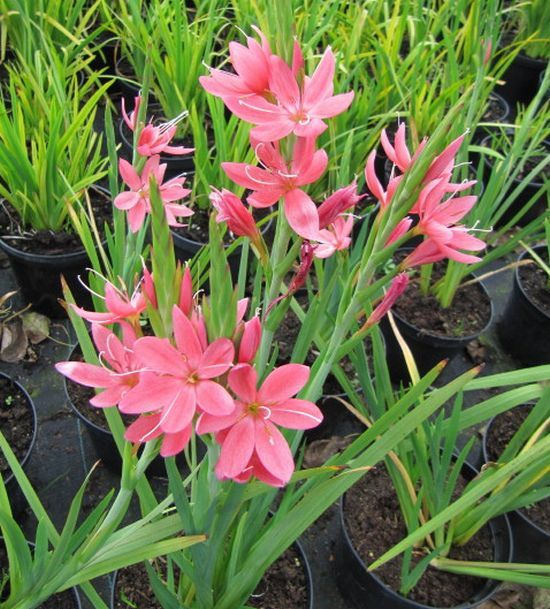
|
Botanical Name |
Hesperantha coccinea |
|
Plant Type |
Rhizome Perennial |
|
Foliage |
Evergreen, excluding winters. |
|
When to propagate |
April, May, and June |
|
Common Name(s) |
Kaffir lily, crimson flag, schizostylis |
|
Native Region |
South Africa |
|
Flowers |
Usually, crocus-shaped pink or scarlet flowers |
|
Hardiness rating |
H4- Indicates hardy in warm and coastal areas of the UK. |
|
Flowering Months |
August, September |
|
Deadheading Months |
August, September |
|
Family |
Iridaceae |
|
Exposure |
Full sun. Suitable in south facing direction. |
|
Height |
16 to 24 inches(40 to 60 cm) |
|
Soil |
Moist-rich soil(clay, chalk, loam, or sand). |
|
pH |
Any |
|
Moisture |
Moist but properly drained. |
|
Habit |
Clump forming |
Top Varieties of Kaafir Lily in The UK
Numerous Hesperantha varieties beautify the United Kingdom.
1. Schizostylis Coccinea– the Parent of The Group
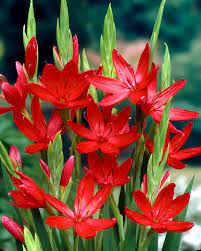
Blooming with stunning crimson flowers, it can grow to a height of 0.3m-0.6 m and a width of 0.4m.
2. Schizostylis coccinea ‘sunrise’
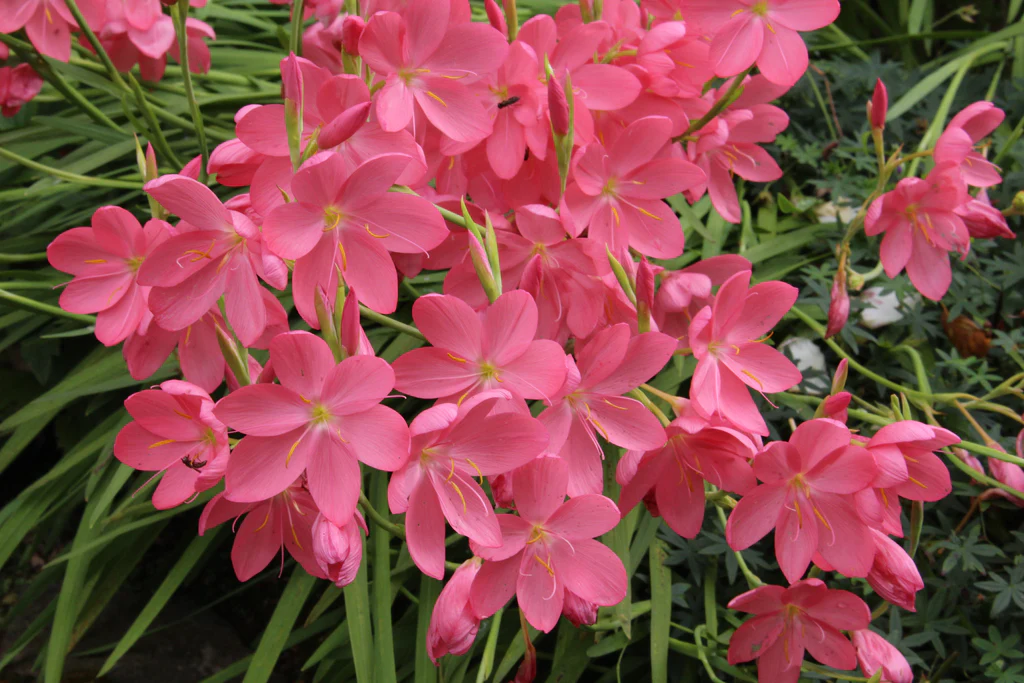
This plant has strong salmon-pink flowers with a height of 0.75 m and a width of 0.6m.
3. Schizostylis Coccinea ‘alba’
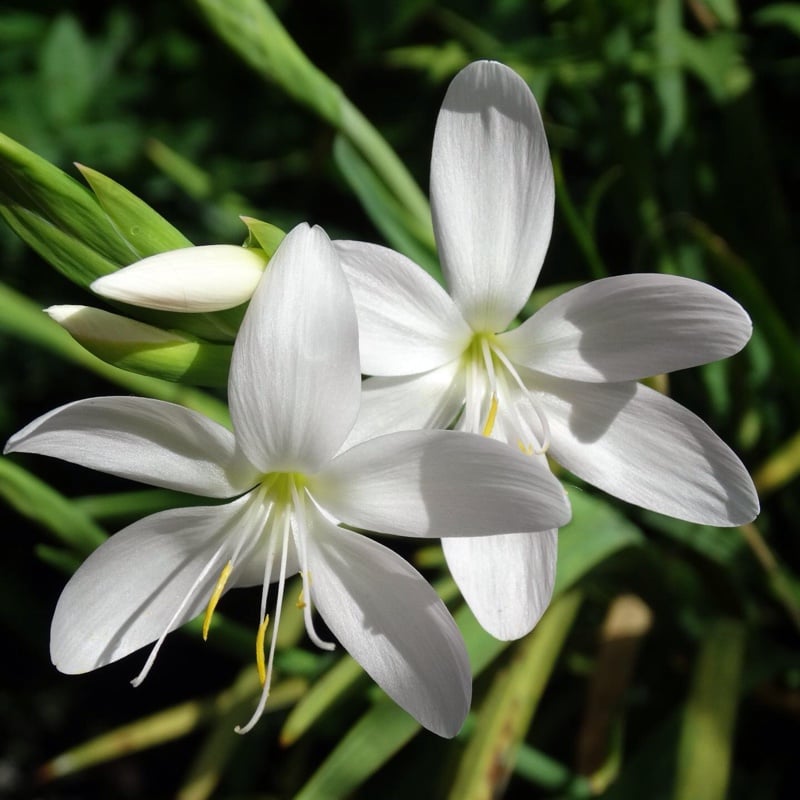
Schizostylis coccinea ‘Alba’ generates fabulous white flowers and extends to a height of 0.5 m and a width of 0.4 m.
4. Schizostylis Coccinea Mrs Hegarty
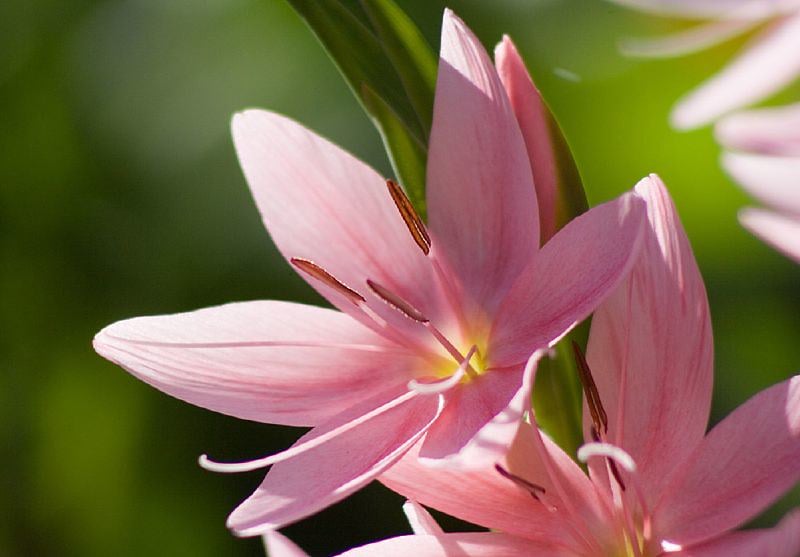
Budding with beautiful pink flowers, it grows to a height of 0.3m-0.60m and a width of 0.3m-0.45m.
5.Schizostylis Coccinea ‘pink Princess’ Agm
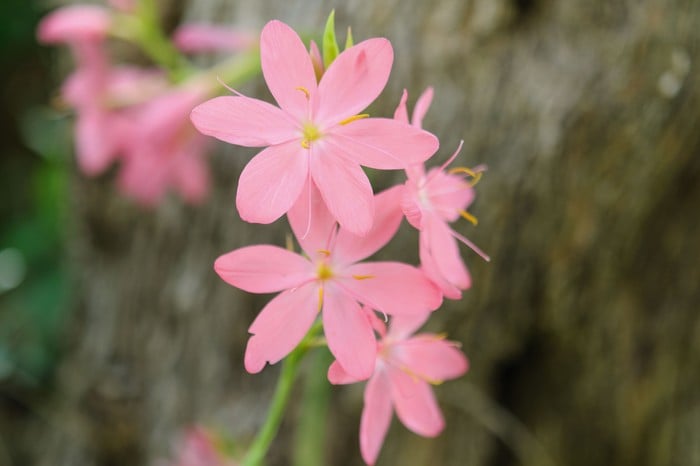
For charming soft pink flowers, this is the best choice, and it grows to a somewhat taller height of 0.6m and width of 0.4m.
6. Schizostylis coccinea ‘Major’ AGM
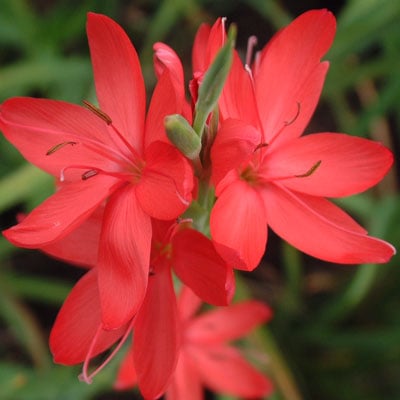
This variety has vivid and bright red flowers and grows to a height of 0.6m and a width of 0.6m.
How to Grow Hesperatha Kaafir Lily in the Uk?
Hesperantha is simple to grow and propagate and is perennial. It is planted in spring since the soil starts to get hot and new growth occurs. Additionally, fertile soil is preferable, and sufficient space is needed for Esperanza to spread.
The hardiness rating is H4 and can bear temperatures to -10C without any protection. Do not plant Hesperantha in summer as they can be stressed due to the heat.
Where to Plant Hesperantha Kaffir Lily?
Hesperantha generates fascinating flowers on stems extending beyond their slender foliage, appearing magnificent in a coastal, cottage, or courtyard garden plan.
Due to its African inheritance, this plant prefers a south-facing direction. But, if you do not own a south-facing space, do not fret, as you can keep them under shade.
For soils, they can manage any sand, clay, loam, or chalk soil, as moist soil is preferable. Apart from this, a cosy spot is vital as a rough cold wind is unacceptable.
Being a clump-generating perennial, it looks fine in a pot or a border.
The advantage when grown in a container or a pot is that it can be shifted under cover or to a non-heated greenhouse during the wintry months if you dwell in a frost pocket.
How to Plant Hesperantha Kaffir Lily?
Hesperantha is accessible in the form of potted-up plants that should be planted at a similar depth as their original pot.
Online sellers might proffer rhizomes for sale at cheap rates, but they are not potted up.
On their advent, the rhizomes must be kept in water for half an hour and then planted into pots with the shoots in an upward direction(10cm deep).
The planting must be on a border, and a spacing of 20 cm is suggested. Water proportionately after planting, as it may take a year to blossom. The care for a lily plant is relatively less, besides extending flowering to deadheading and removing the stems and old tatty foliage during winter.
Watering
During the summer, it is significant to water the plants daily as the moist soil is suitable due to their natural dwelling constituting water meadows and African river banks.
Feeding
Feeding is not mandatory, but a fertilizer in spring with organic matter in winter works wonders. It does not get affected by other diseases or pests. Also, it is rabbit resistant, which is a bonus point for gardeners.
Propagating Hesperantha Kaafir Lily
Hesperantha can be crowded with time, and separating the plant every two to three years is suggested.
Division of Kaafir Lily
The division is a simple approach to generating new plants. It is done better in spring when the soil gets heated, and new growth appears.
Lift the plants and divide them into small clumps with five to six shoots on each.
Growth from Seed
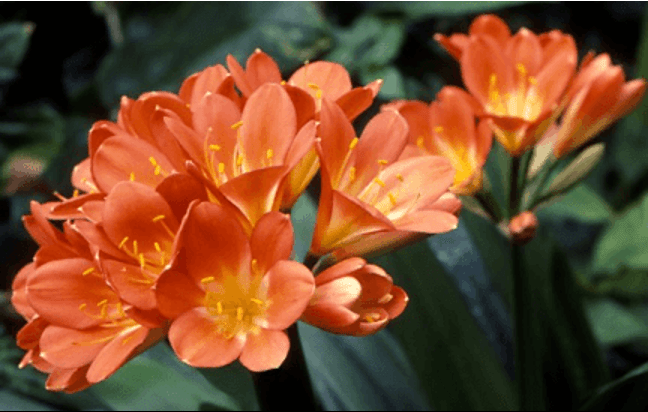
Hesperantha can be grown from seed even though division is the easiest option. To develop from seed, it is appropriate to sow in early spring in a free-draining and moist soil mix and wrapped with vermiculite.
Germination needs a temperature of 15°C and needs three months and much patience. After germination, thin the seedlings and leave them till the following year to the pot and plant out.
Hesperantha is the most remarkable plant to grow in United Kingdom gardens as they need very little care and will render eye-catching flowers to beautify the garden in autumn.
Conclusion
Why is the Hesperantha kaffir lily gaining significance in the gardens of the United Kingdom? They are easy to grow, perennial, and enhance the garden’s beauty with their marvellous flowers in various colours like classic whites, soft pinks, and bright reds.
Besides that, Esperanza can be overcrowded, and you need to divide the plant every two to three years. First, pick up the plants and split them into small bunches with 5-6 shoots each.
Also, you can surprisingly grow hesperantha from seed in early spring.
Lastly, you need to care for a lily plant very minimally, excluding extending flowering to deadheading and extracting the stems and old tatty foliage during winter.
Happy planting!
Frequently Asked Questions
What Is the Right Way to Water Kaffir Lily?
The right way to water kaffir lily is to use filtered water at room temperature since tap water comprises harmful particles. Additionally, avoid overhead water due to foliage issues. Just add your filtered water to the soil till it gets soaked.
How Much Water Does Kaffir Lily Require?
Kaffir lily requires enough watering with 2-3 inches of soil dry. The amount of water must be adequate to let surplus water flow via the drainage holes beneath your pot. You have not watered your plant properly if you do not see extra water draining from the pot.
How to Water Kaffir Lily Throughout the Seasons?
You need to water kaffir lily throughout the seasons in the following manner. Firstly, it has huge water requirements during the summer. Therefore, you must water the plant more than once every week based on the fast the soil dries.
How to Water Kaffir Lily During Various Growth Stages?
The kaffir lily water requirements changes with various growth stages. For instance, when your kaffir lily is in the primary years of its life, or you have shifted it to a new place, you must water more than normal. During both stages, you should care for a lily plant.

